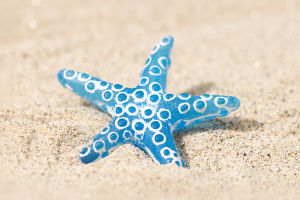Goldfish Water Essentials
Keeping a goldfish can be a rewarding and enjoyable experience, offering a serene addition to any home.
However, the success of maintaining a healthy and vibrant goldfish tank hinges significantly on one crucial aspect: water quality.
Water quality is not just a technical requirement but a fundamental element that influences the overall health and well-being of your aquatic pet. This essay delves into the small yet significant details of selecting and maintaining optimal water quality for your goldfish, emphasizing its importance and providing practical tips for achieving it.
The Importance of Water Quality
Goldfish are particularly sensitive to changes in their environment, and water quality is paramount for their health. Poor water quality can lead to various problems, including stress, disease, and even premature death. A well-maintained aquatic environment ensures that your goldfish thrive, exhibiting vibrant colors, active behavior, and a long, healthy life. Understanding and managing water quality is essential for preventing common issues such as ammonia toxicity, nitrite spikes, and pH imbalances.
Key Parameters for Goldfish Water Quality
1. Ammonia Levels
What It Is: Ammonia is a waste product produced by goldfish and decomposing food and organic matter. It is highly toxic to fish, even in small amounts.
Ideal Range: Ammonia levels should be undetectable (0 ppm).
How to Manage: Regular water changes and using a good quality filter that can convert ammonia to less harmful substances are crucial. Test kits are available to monitor ammonia levels frequently.
2. Nitrite Levels
What It Is: Nitrite is another toxic byproduct in the nitrogen cycle, formed when bacteria break down ammonia.
Ideal Range: Nitrite levels should also be at 0 ppm.
How to Manage: Ensure your aquarium has a well-established biological filter that can convert nitrite to nitrate. Regular maintenance and testing can help prevent nitrite spikes.
3. Nitrate Levels
What It Is: Nitrate is the end product of the nitrogen cycle and is less toxic than ammonia and nitrite but can still affect fish health at high levels.
Ideal Range: Nitrate levels should be kept below 40 ppm, with lower levels being better.
How to Manage: Regular water changes and proper tank maintenance can help keep nitrate levels in check. Plants and certain filter types can also help reduce nitrate.
4. pH Levels
What It Is: pH measures the acidity or alkalinity of the water. Goldfish generally prefer a slightly alkaline environment.
Ideal Range: The pH should be between 6.5 and 7.5.
How to Manage: Regularly test the pH and use pH-adjusting products or natural methods (like adding certain types of rocks or substrates) to maintain stability.
5. Temperature
What It Is: Temperature affects the metabolic rate of goldfish and the solubility of oxygen in water.
Ideal Range: Goldfish typically thrive in temperatures between 65°F and 75°F (18°C to 24°C).
How to Manage: Use a reliable heater or chiller if necessary, and regularly monitor the water temperature with a thermometer.


